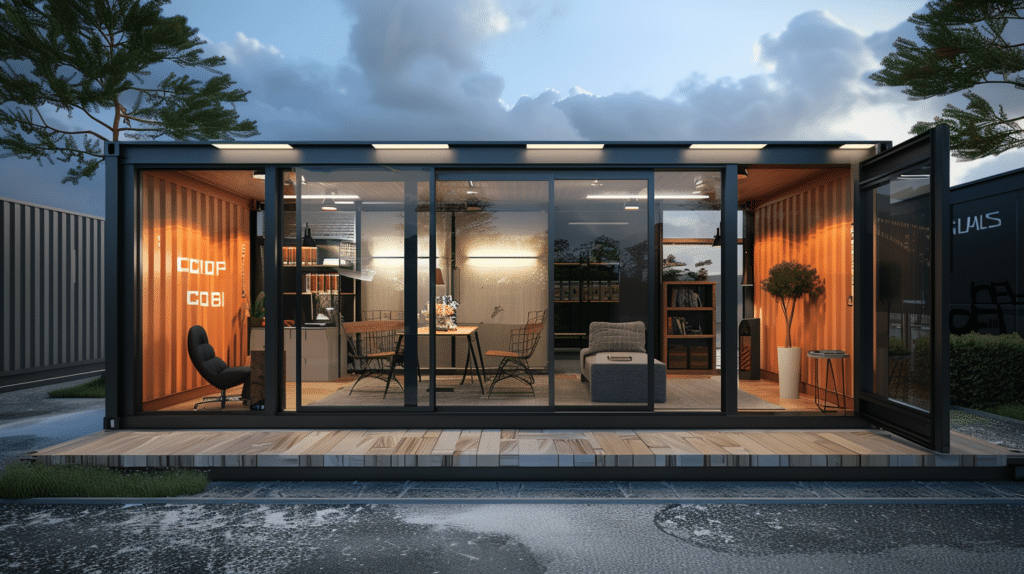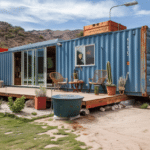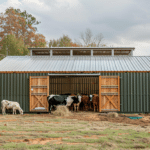Table of Contents
ToggleShipping Container Offices: Transforming Workspaces with Innovation
In recent years, the concept of repurposing shipping containers into functional spaces has gained significant traction, especially in the realm of office architecture. These versatile structures offer a blend of sustainability, flexibility, and affordability, making them an attractive option for businesses seeking innovative workspace solutions. From startups to established corporations, shipping container offices have emerged as a trendsetting choice for modern work environments. Let’s delve into the various aspects of shipping container offices, exploring their benefits, dimensions, construction options, and more.
Benefits
1. Sustainability: One of the most compelling advantages of shipping container offices is their eco-friendly nature. By upcycling decommissioned shipping containers, businesses contribute to the reduction of waste and environmental conservation.
2. Cost-Effectiveness: Compared to traditional brick-and-mortar construction, shipping container offices offer significant cost savings. The materials are readily available, and the construction process is generally quicker, resulting in reduced labor expenses.
3. Mobility and Flexibility: Shipping container offices can be easily transported and relocated, providing businesses with the flexibility to adapt to changing needs or move operations to different locations without significant hassle.
4. Customization: These structures offer ample opportunities for customization. From layout design to interior aesthetics, businesses can tailor their shipping container offices to reflect their brand identity and accommodate specific functional requirements.
Dimensions
Standard shipping containers typically come in two sizes: 20 feet and 40 feet in length, with a width of about 8 feet and a height of approximately 8.5 feet. However, custom sizes are also available to meet unique space requirements.
Framing and Wall Options
The framing of shipping container offices can be modified to accommodate various design preferences and structural needs. Common options include steel framing, which offers robust support and durability, and wood framing, which provides a more traditional aesthetic.
For wall options, businesses can choose from a range of materials such as drywall, plywood, or insulated panels. These materials offer insulation and allow for the integration of electrical wiring and other fixtures.
Insulation Needs
Proper insulation is crucial for maintaining comfortable temperatures inside shipping container offices, especially in extreme climates. Various insulation materials, such as spray foam, rigid foam boards, or eco-friendly options like recycled denim insulation, can be used to enhance thermal efficiency and soundproofing.
Electrical & Lighting Options
Shipping container offices can be equipped with standard electrical systems, including outlets, lighting fixtures, and HVAC units. LED lighting is a popular choice for its energy efficiency and longevity. Solar panels can also be integrated to further reduce energy costs and enhance sustainability.
Best Flooring Choices
When it comes to flooring, durable and moisture-resistant materials are essential for withstanding the rigors of daily use. Common flooring options for shipping container offices include hardwood, laminate, vinyl, or polished concrete. Each material offers unique aesthetic qualities and maintenance requirements.
Window & Door Options
Windows and doors play a crucial role in enhancing natural light, ventilation, and aesthetics within shipping container offices. Businesses can choose from a variety of options, including sliding glass doors, double-pane windows, and custom-sized entrances to suit their preferences and security needs.
MEP (Mechanical, Electrical, and Plumbing)
Incorporating mechanical, electrical, and plumbing systems into shipping container offices requires careful planning and execution. Professional contractors can install HVAC units, plumbing fixtures, and electrical wiring while ensuring compliance with building codes and safety standards.
Exterior Options
The exterior appearance of shipping container offices can be customized to align with the surrounding environment and complement the business’s branding. Options for exterior finishes include paint, cladding, or decorative elements such as murals or green walls.
Conclusion
Shipping container offices offer a myriad of benefits and customization options for businesses seeking innovative workspace solutions. From sustainability and cost-effectiveness to flexibility and design versatility, these structures continue to revolutionize the modern office landscape, providing a unique blend of functionality and aesthetic appeal. As the demand for adaptable and eco-conscious workspaces grows, shipping container offices are poised to remain at the forefront of architectural innovation.






